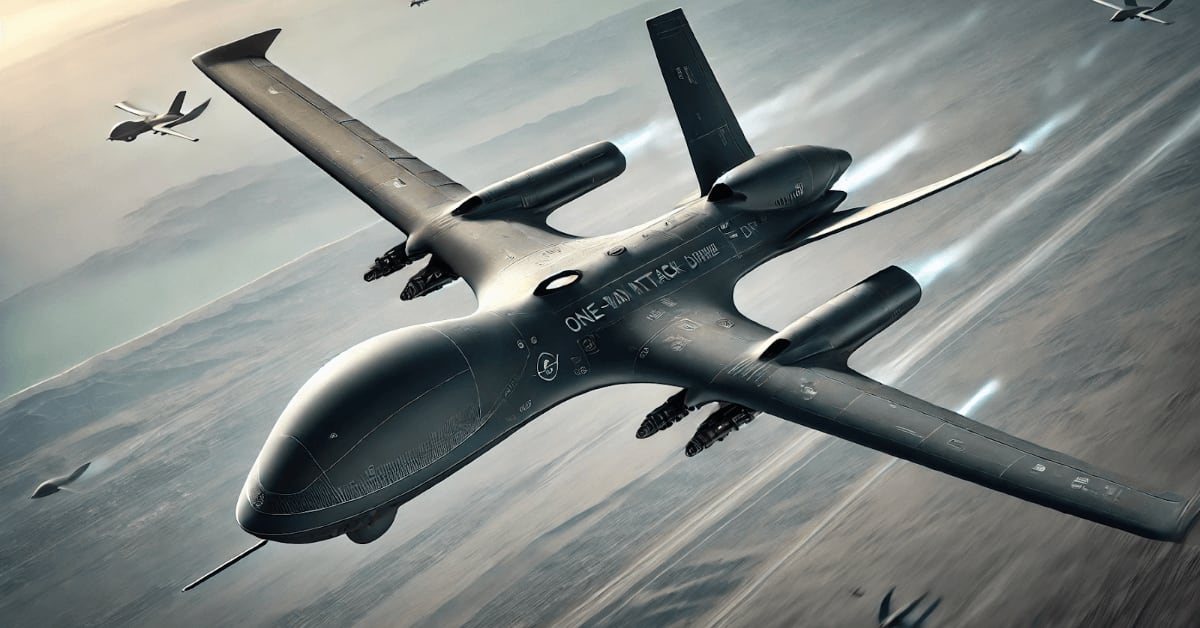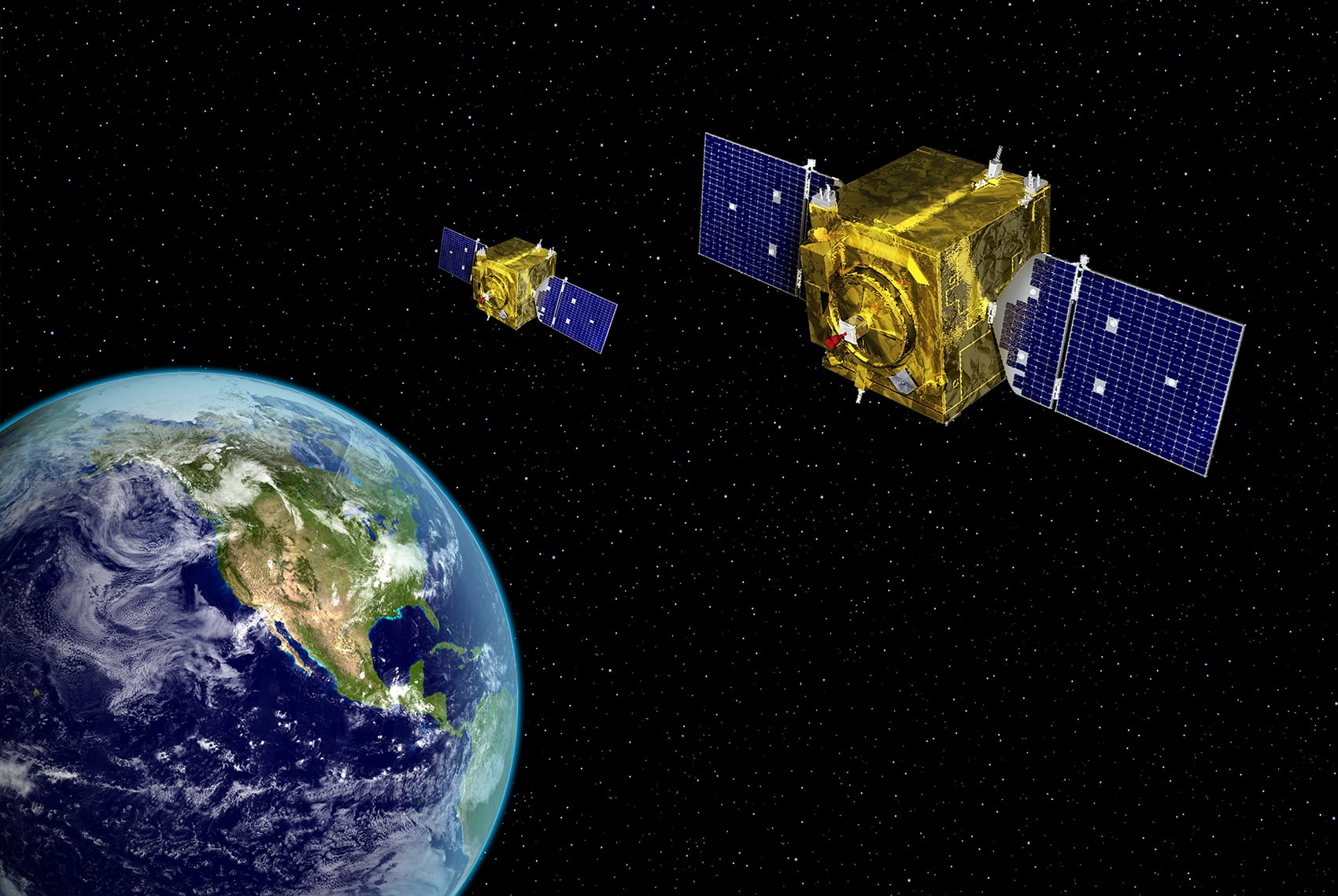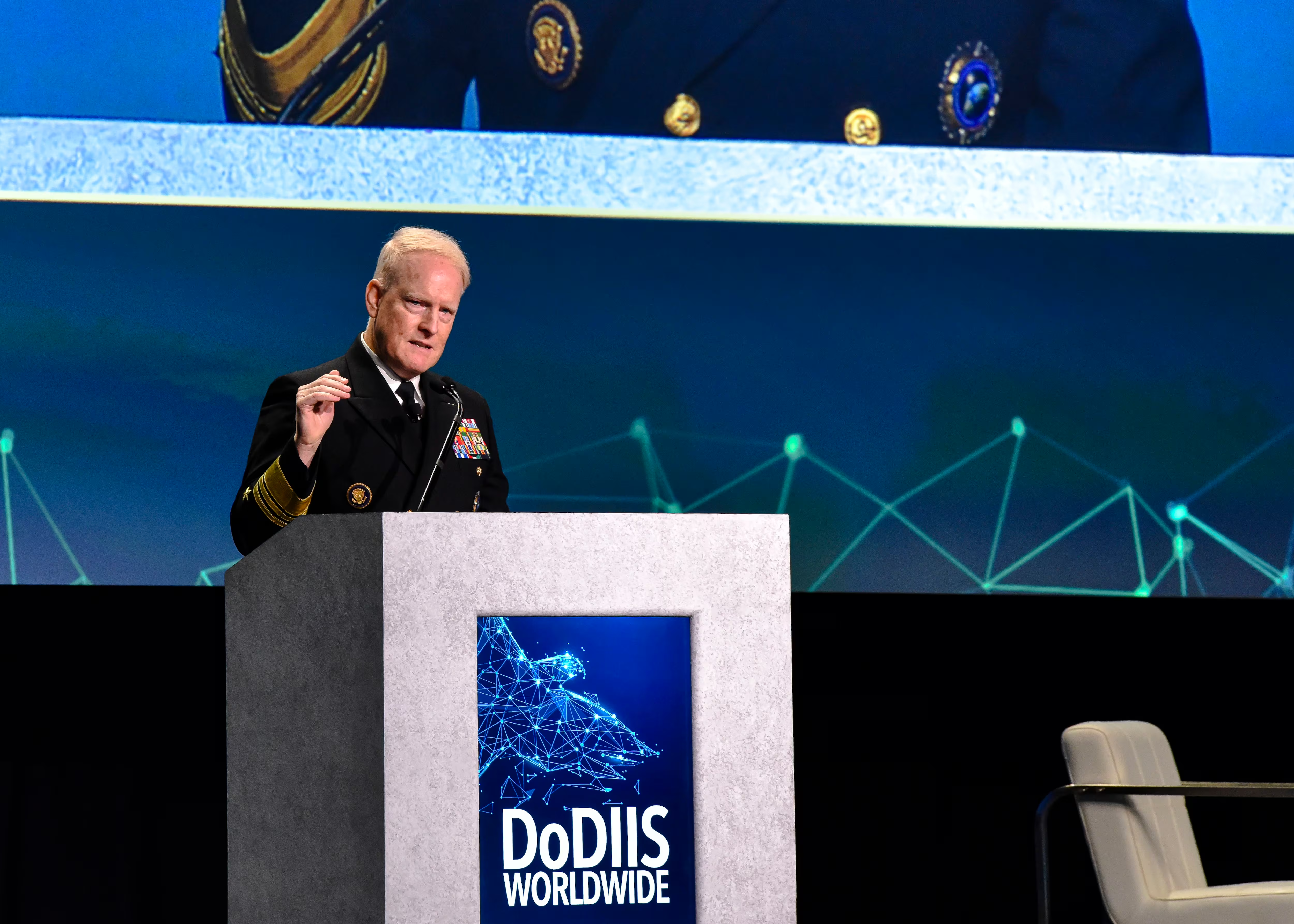A new update to the Link 16 situational awareness network uses direct connections to prioritize data for the war fighter and paves the way for artificial intelligence to be integrated into the system.
The Link 16 network is a tactical situational awareness network that provides friend and foe locations to the user, giving the war fighter the information they need to operate effectively on the battlefield. The Link 16 network includes everything from handheld units to terminals installed on ships, aircraft and more.
The latest major update to that system, Concurrent Multiple Reception, allows the units to simultaneously demodulate and decrypt multiple messages. That means that high-priority positional data can be updated more quickly without sacrificing the data speeds of lower priority information.
CMR was developed by Viasat, a company that supplies many of the components that make up the Link 16 network, and in May was awarded a contract to launch the first Link 16-capable space vehicle, which would expand the Link 16 network to beyond line-of-sight communications.
“You can think of [CMR as creating] an HOV lane that doesn’t impact the other lanes in the highway. They’re still operating and carrying all the traffic they would otherwise, but this creates an HOV lane that operates in parallel such that information can be passed in an accelerated way among those force elements that I choose to be directly connected to,” explained Ken Peterman, president of government systems business for Viasat.
“You can have an appreciation that it would be desirable to have the update rate of those elements closest to you be updated much more frequently than those elements that might be 10 or 30 or 50 or 100 miles away from you, because, frankly, you simply don’t need to know that with the same kind of update rate,” he continued. “So what this does is instead of having a constant update rate for everything, it gives you the opportunity to directly connect with those force elements nearest to you and for them to communicate directly in any time slot such that the information is always fresh and even more precise.”
Beyond providing an immediate advantage for the soldier on the battlefield, the CMR update also paves the way for future artificial intelligence integration.
“If we start to use machine learning and artificial intelligence to anticipate emergent threats or opportunities, or if we watch patterns of behavior of, say, adversary forces, and we’re going to predict and provide proactive tipping and queuing to war fighters as to what might happen next, that information in a fast moving battlefield environment needs to be communicated really rapidly,” said Peterman.
In other words, artificial intelligence can determine which information is most relevant to the war fighter and put it into that HOV data lane to ensure it gets into their hands as quickly as possible.
“It’s starting to lay the foundation such that the Link 16 tactical data network has the communications infrastructure, is starting to add the features, to support artificial intelligence and machine learning,” said Peterman.
For handheld units and small terminals, CMR has been added with a software update. Viasat said that many older terminals were being retrofitted with CMR capability, while all future terminals will be delivered with it. In April, the company announced that it had successfully incorporated CMR into all of its next-generation Link 16 products.
Nathan Strout covers space, unmanned and intelligence systems for C4ISRNET.








